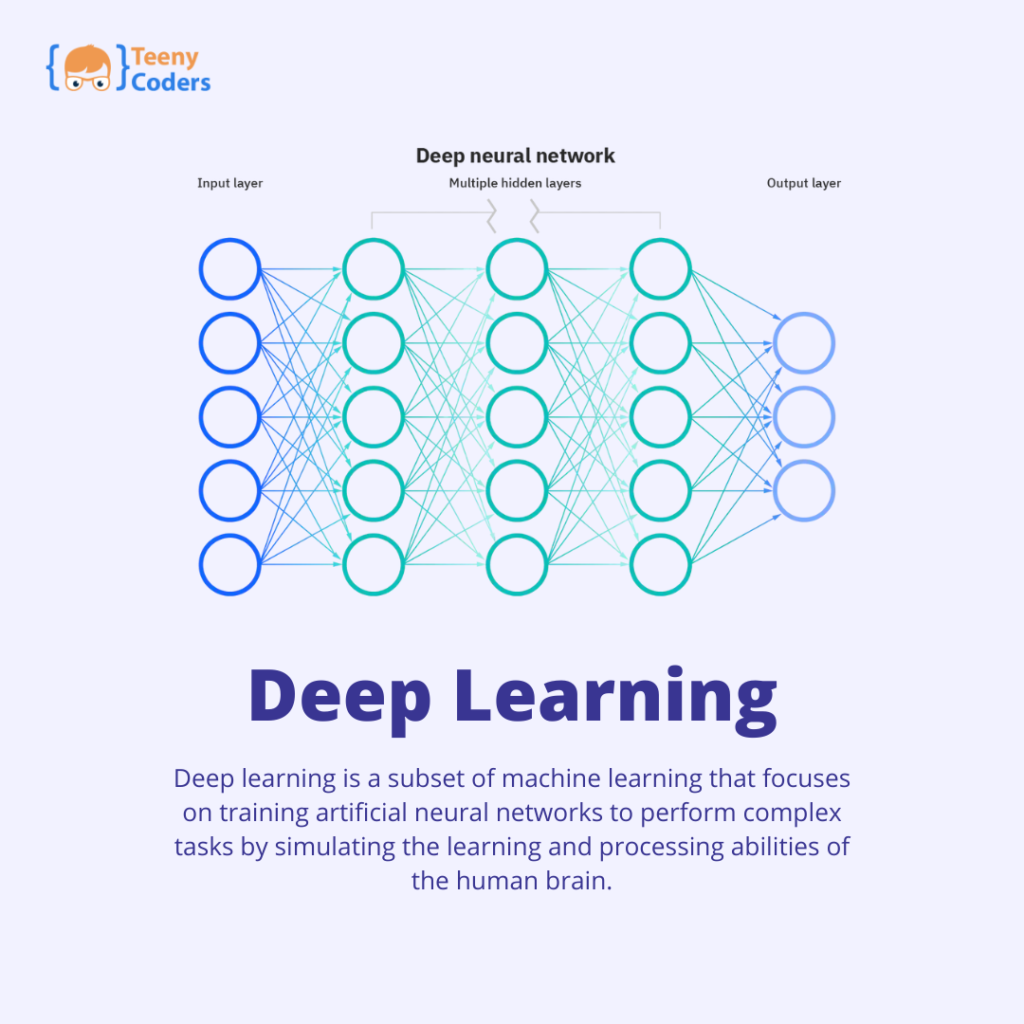Introduction
Deep learning is a subset of machine learning that focuses on training artificial neural networks to perform complex tasks by simulating the learning and processing abilities of the human brain. Its ability to tackle previously challenging problems has garnered significant attention in recent years. This article aims to explore the concept of deep learning and provide a step-by-step approach to learning and mastering it.
Table of Contents
Understanding Deep Learning
Deep learning involves training artificial neural networks with multiple layers to learn from vast amounts of data and make accurate predictions or decisions. These networks mimic the structure and function of the human brain, comprising interconnected nodes or “neurons” that process and transmit information.
The training process of deep learning algorithms involves recognizing patterns and relationships within data. This iterative process adjusts the weights and biases of the network’s neurons to minimize the difference between predicted and actual outputs, ultimately achieving the desired level of accuracy.
How to Get Started with Deep Learning
For those interested in learning deep learning, the following step-by-step guide will provide a solid foundation:
Step 1: Grasp the Basics
Before delving into deep learning, it’s crucial to grasp the fundamentals of machine learning and neural networks. Familiarize yourself with concepts such as supervised and unsupervised learning, activation functions, loss functions, and gradient descent.
Step 2: Learn Python
Python serves as the primary programming language for deep learning. It offers a wide range of libraries and frameworks that simplify the implementation of deep learning algorithms. Dedicate time to learning Python and its popular libraries, such as TensorFlow, PyTorch, and Keras.
Step 3: Study Linear Algebra and Calculus
Deep learning relies heavily on linear algebra and calculus for tasks like matrix operations, optimization, and gradient computation. Enhance your understanding of these mathematical concepts to better grasp the underlying principles of deep learning.
Step 4: Dive into Neural Networks
Neural networks are the building blocks of deep learning. Study the architecture of various types of neural networks, including feedforward networks, convolutional neural networks (CNNs), and recurrent neural networks (RNNs). Understand how to construct, train, and evaluate neural networks for different tasks.
Step 5: Hands-on Projects and Practice
Put your knowledge into practice by working on hands-on projects. Start with simple tasks like image classification or sentiment analysis and gradually progress to more complex projects. Practicing regularly is crucial for developing a profound understanding of the concepts and gaining practical experience.
Step 6: Stay Updated with the Latest Research
Deep learning is a rapidly evolving field with frequent advancements and research publications. Stay updated with the latest research papers, attend conferences, and follow renowned researchers and experts in the field. This will ensure you remain at the forefront of the field, leveraging the latest techniques and methodologies.
Frequently Asked Questions (FAQs)
Q1: What are the applications of deep learning?
Deep learning finds applications across various industries. Notable examples include image and speech recognition, natural language processing, autonomous vehicles, healthcare diagnostics, and financial forecasting.
Q2: Is deep learning only for experts in programming and mathematics?
While a background in programming and mathematics can be advantageous, deep learning is accessible to beginners as well. Numerous online resources, tutorials, and courses cater to different skill levels, enabling anyone to learn and apply deep learning techniques.
Q3: Can deep learning models be deployed on mobile devices?
Yes, deep learning models can be deployed on mobile devices. Advances in hardware and software optimizations have made it possible to efficiently run deep learning models on mobile devices. This opens up opportunities for developing mobile applications with intelligent features like image recognition, voice assistants, and personalized recommendations.
Q4: How long does it take to learn deep learning?
The time required to learn deep learning varies based on individual backgrounds, dedication, and available learning resources. Deep learning is a complex field that demands a solid understanding of mathematics, programming, and machine learning fundamentals. With consistent effort and practice, one can begin applying deep learning techniques within a few months. However, achieving proficiency and mastery may take several years of continuous learning and hands-on experience.
Q5: Are there any prerequisites for learning deep learning?
While there are no strict prerequisites, having a basic understanding of programming, mathematics (specifically linear algebra and calculus), and machine learning concepts can be advantageous when embarking on the deep learning journey. However, even for beginners, there are beginner-friendly resources available that provide guidance through the necessary prerequisites.
Q6: What are some recommended resources for learning deep learning?
Several excellent resources are available for learning deep learning. Here are some recommended options:
Coursera:
Offers courses like “Deep Learning Specialization” by deeplearning.ai and “Introduction to Deep Learning” by the National Research University Higher School of Economics.
Udacity:
Provides nanodegree programs such as “Deep Learning” and “Artificial Intelligence.”
TensorFlow and PyTorch official documentation:
These libraries have extensive documentation and tutorials covering various deep learning topics.
YouTube:
Many experts and educators in the deep learning field share their knowledge through YouTube tutorials and lectures.
Remember to explore multiple resources and find those that align with your learning style and goals.
Conclusion
Deep learning empowers machines to learn and make intelligent decisions based on extensive data analysis. By following a step-by-step approach, beginners can acquire a solid understanding of deep learning and gradually develop expertise in this exciting field. Remember to dedicate time to understanding the basics, learning Python, studying relevant mathematics, exploring neural networks, practicing through hands-on projects, and staying updated with the latest advancements. With dedication and perseverance, you can unlock the full potential of deep learning and contribute to its ever-growing applications.


